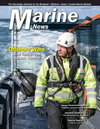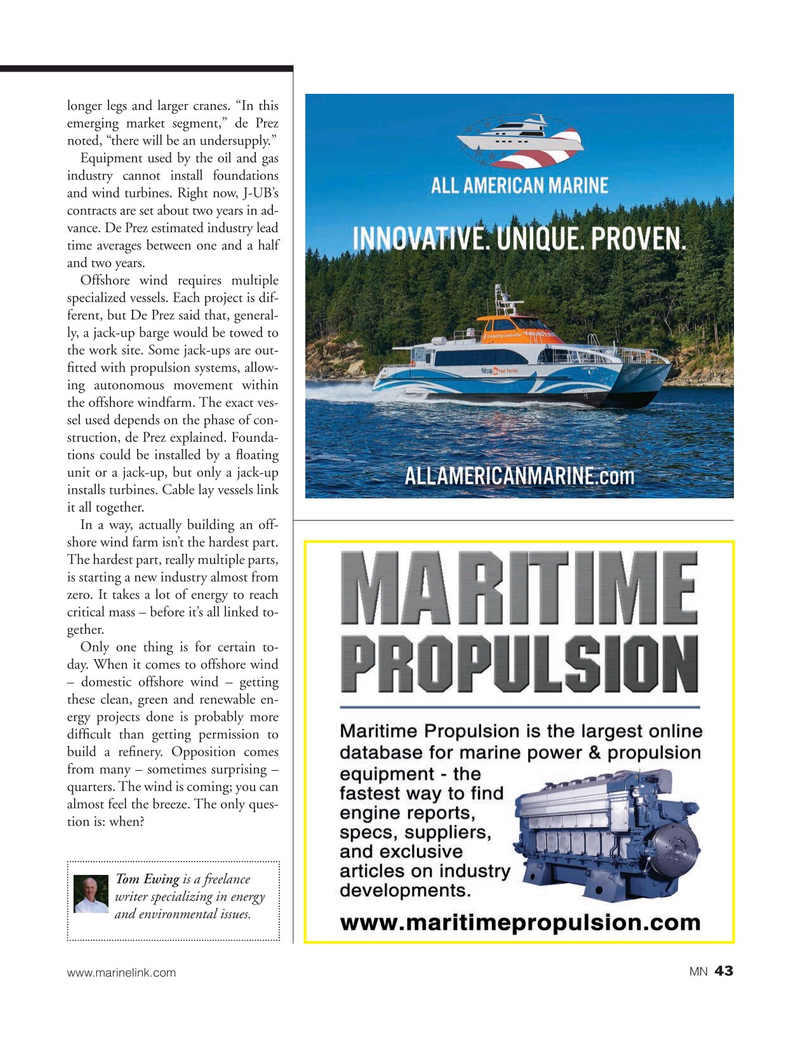
Page 43: of Marine News Magazine (September 2019)
Vessel Conversion and Repair
Read this page in Pdf, Flash or Html5 edition of September 2019 Marine News Magazine
longer legs and larger cranes. “In this emerging market segment,” de Prez noted, “there will be an undersupply.”
Equipment used by the oil and gas industry cannot install foundations and wind turbines. Right now, J-UB’s contracts are set about two years in ad- vance. De Prez estimated industry lead time averages between one and a half and two years.
Offshore wind requires multiple specialized vessels. Each project is dif- ferent, but De Prez said that, general- ly, a jack-up barge would be towed to the work site. Some jack-ups are out- ? tted with propulsion systems, allow- ing autonomous movement within the offshore windfarm. The exact ves- sel used depends on the phase of con- struction, de Prez explained. Founda- tions could be installed by a ? oating unit or a jack-up, but only a jack-up installs turbines. Cable lay vessels link it all together.
In a way, actually building an off- shore wind farm isn’t the hardest part.
The hardest part, really multiple parts, is starting a new industry almost from zero. It takes a lot of energy to reach critical mass – before it’s all linked to- gether.
Only one thing is for certain to- day. When it comes to offshore wind – domestic offshore wind – getting these clean, green and renewable en- ergy projects done is probably more dif? cult than getting permission to build a re? nery. Opposition comes from many – sometimes surprising – quarters. The wind is coming; you can almost feel the breeze. The only ques- tion is: when?
Tom Ewing is a freelance writer specializing in energy and environmental issues.
43 www.marinelink.com MN
MN Sept19 Layout 32-49.indd 43 8/28/2019 11:04:09 AM

 42
42

 44
44
